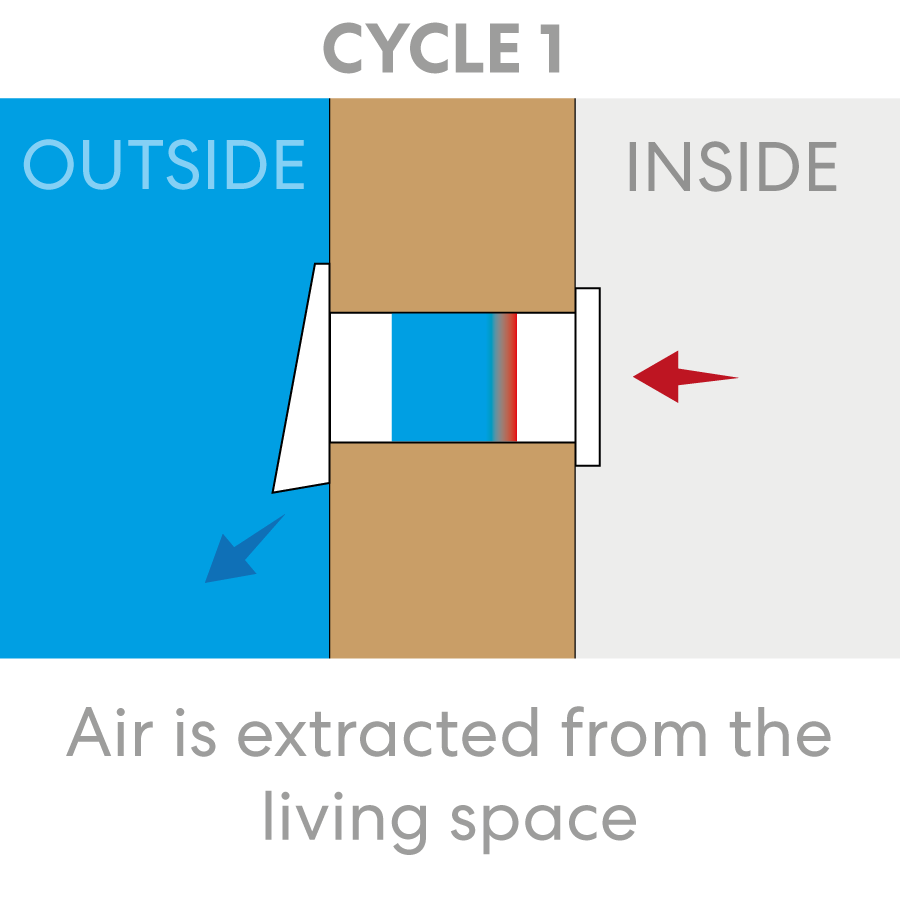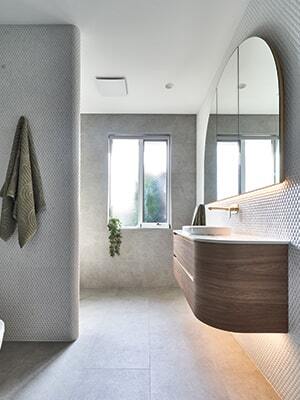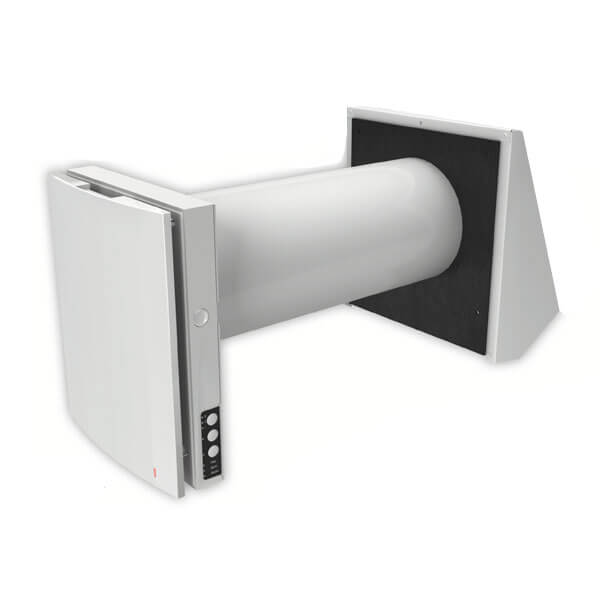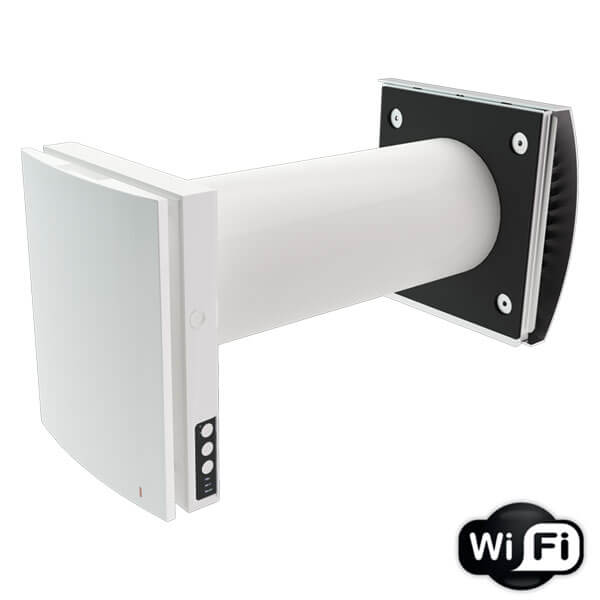HEAT RECOVERY
Current Fanco Models
We have two decentralised heat recovery models available, the Habitat Expert and the Habitat Expert Wifi. These units feature high-quality ceramic accumulators which retain up to 93% and 87% of heat energy respectively.
A single unit can operate as a complete system, which does not need to be hardwired to a wall control. Both versions include a control panel on the unit as well as a remote-control handset. The version with Wi-Fi connectivity gives you the added option of operating the unit from your smart phone.
It’s also possible to create a larger heat recovery system by connecting several units together. The Habitat Expert Wi-Fi makes this process particularly easy, as the units connect to each other wirelessly. This type of system is controlled from a single remote, or by the controls on the master unit. Although the unit’s Wi-Fi connectivity makes it easier to pair to secondary units, it’s not strictly necessary to use the Habitat Expert WiFi if this is the type of system you want. The basic version can also be hardwired to up to 10 units. Learn more about each model below:
General Heat recovery Information
Everyone wants their house to be as airtight as possible, this means in winter you can get the most out of your heating and in summer from your air conditioning. Therefore reducing costs and improving efficiency.
New buildings are built to certain energy rating standards that ensure this is the case. This improvement in thermal performance also increases risk of moisture build up. Everyday household activities such as showering, cooking and using a clothes dryer for example all introduce moisture to your living areas.
A lack of natural ventilation can cause poor air quality which can significantly contribute to respiratory problems and asthma. Not to mention condensation and mould.
What is Heat Recovery?
A Heat Recovery Ventilation (HRV) system is a form of mechanical ventilation that will significantly improve indoor air quality as well as significantly improve your household energy efficiency. A heat recovery system is fundamentally designed to provide air movement in an airtight house and should be considered when planning a new build. The principle (illustrated below in its simplest form) involves extraction of room temperature stale air and the introduction of fresh, filtered outdoor air. As the air travels through a heat exchange element the fresh air coming in replacing the extracted air is close to the same temperature as the extracted air.
A heat recovery system is also a wise addition if you are renovating an older house and in the process implement changes to improve thermal performance (for example install insulation, new double glazed windows or cover trickle vents).
FUNDAMENTAL BENEFITS OF HEAT RECOVERY
- Introduce fresh and filtered outdoor air into the home.
- Significantly improve indoor air quality – ideal for allergy or Asthma sufferers.
- Lack of ventilation increases the relative humidity indoors.
- Heating and cooling otherwise lost through open windows is retained, practically speaking you may not need to run your heating as high in winter which equates to power bill savings.
- Leaving a window open whilst running heating can result in the loss of approx 50% of heating energy.
- Ventilation becomes energy efficient as well as functional.
Prevent mould growth and damage by removing water vapour. - Reduction of harmful emissions, examples of which include toxins from household cleaners or Carbon Monoxide, Sulphur dioxide and nitrogen oxide from heating and cooling.
- Ensure a equilibrium of pressure – this means the amount of air entering and leaving the living space is the same





